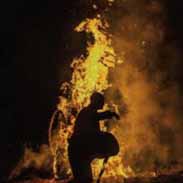Van Der Waals Flashcards, test questions and answers
Discover flashcards, test exam answers, and assignments to help you learn more about Van Der Waals and other subjects. Don’t miss the chance to use them for more effective college education. Use our database of questions and answers on Van Der Waals and get quick solutions for your test.
What is Van Der Waals?
Van der Waals is a Dutch physicist and Nobel Prize winner who is best known for his work on the properties of gases. He developed an equation that explained how molecules interact with each other, which became known as the Van der Waals equation. This equation helped to explain why some gases behave differently than others at different temperatures and pressures. Additionally, his work contributed significantly to our understanding of thermodynamics and fluid dynamics.Van der Waals was born in 1837 in Leiden, Holland. He studied physics at the University of Leiden where he received his doctorate in 1873. After graduation, he began teaching at the same university but soon left for Berlin where he worked as a professor at the University of Berlin from 1877 until 1890 when he returned to Leiden for his final years as a professor there.In terms of research, Van der Waals made significant contributions in many areas including thermodynamics and statistical mechanics. In particular, he developed an equation (the Van der Waals equation) that could explain why some gases behaved differently than others under different conditions of temperature and pressure. His work also allowed us to better understand how particles interact with each other when placed under pressure or heat, leading to advances in fluid dynamics such as aerodynamics and hydrodynamics. In 1910, Van der Waals was awarded the Nobel Prize in Physics for his investigations into thermal equilibrium between heterogeneous substances effectively recognizing him for developing the Van der Waal’s equation which allows us to understand how molecules interact with each other under varying conditions of temperature and pressure. Van Der Walls’ work has had a far-reaching impact on modern science; it has improved our understanding about everything from aeronautical engineering to medicine thanks to its insights into intermolecular forces and thermodynamic behavior – all derived from his pioneering discoveries about molecular interactions over 140 years ago.













